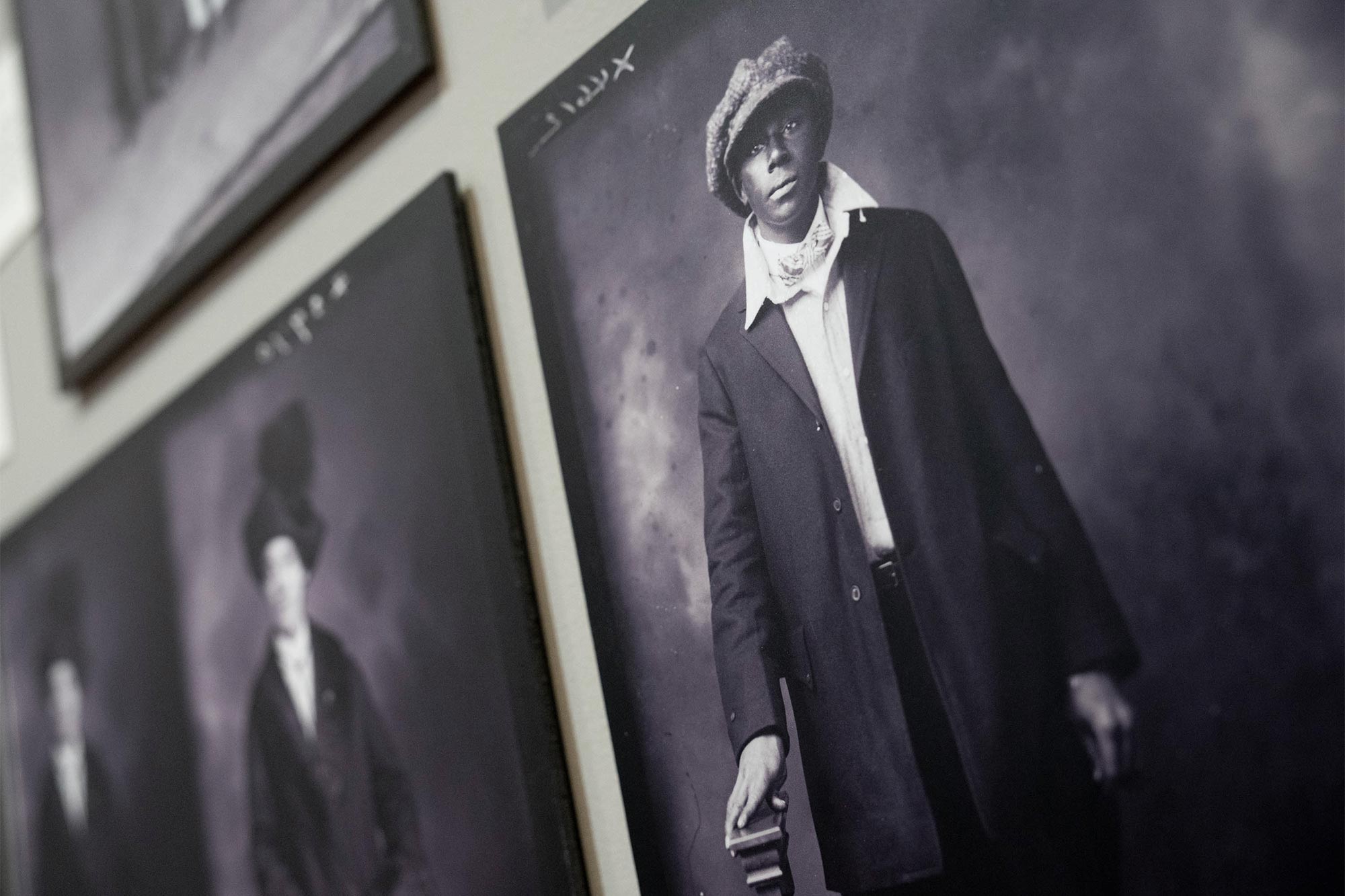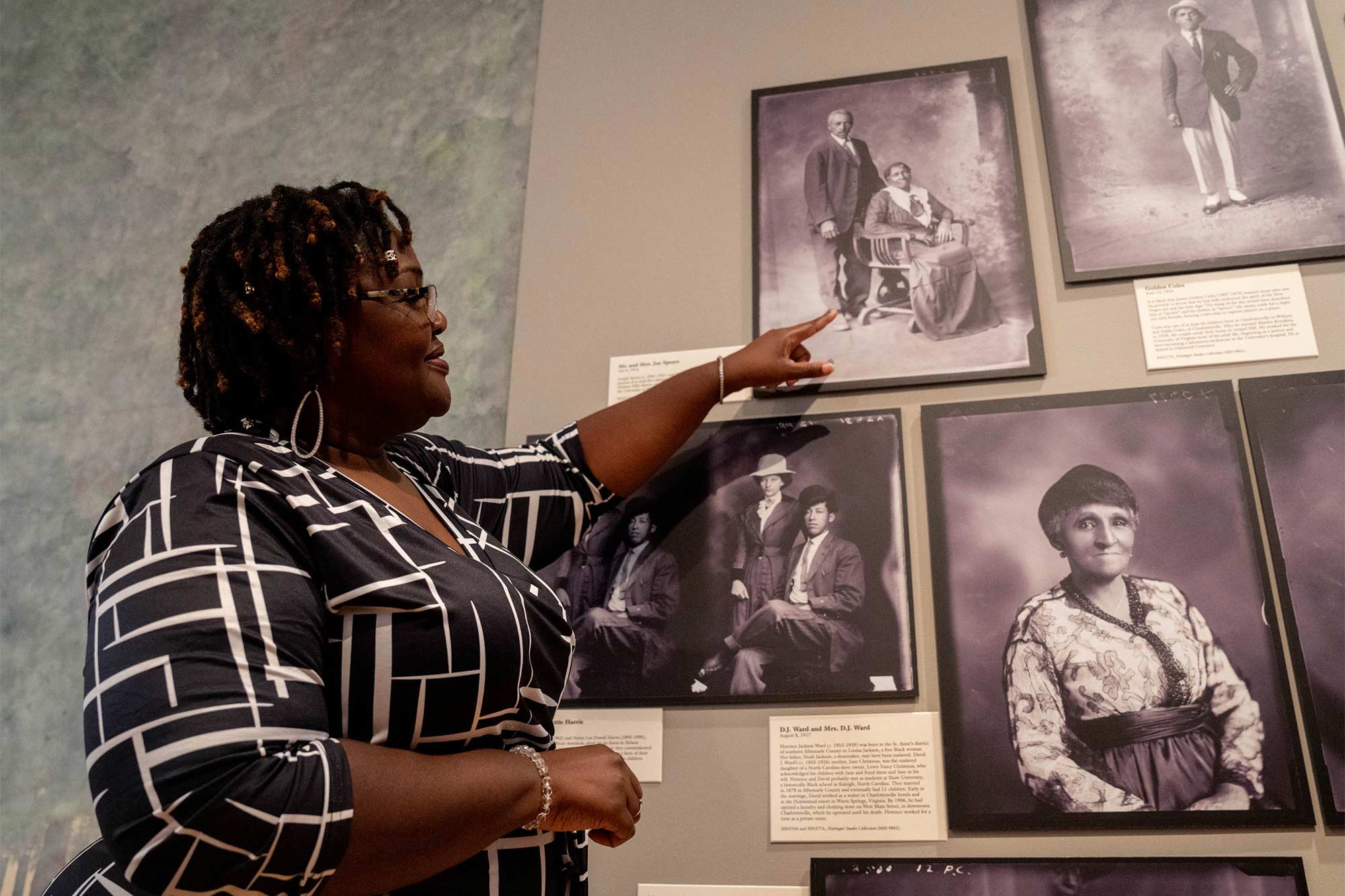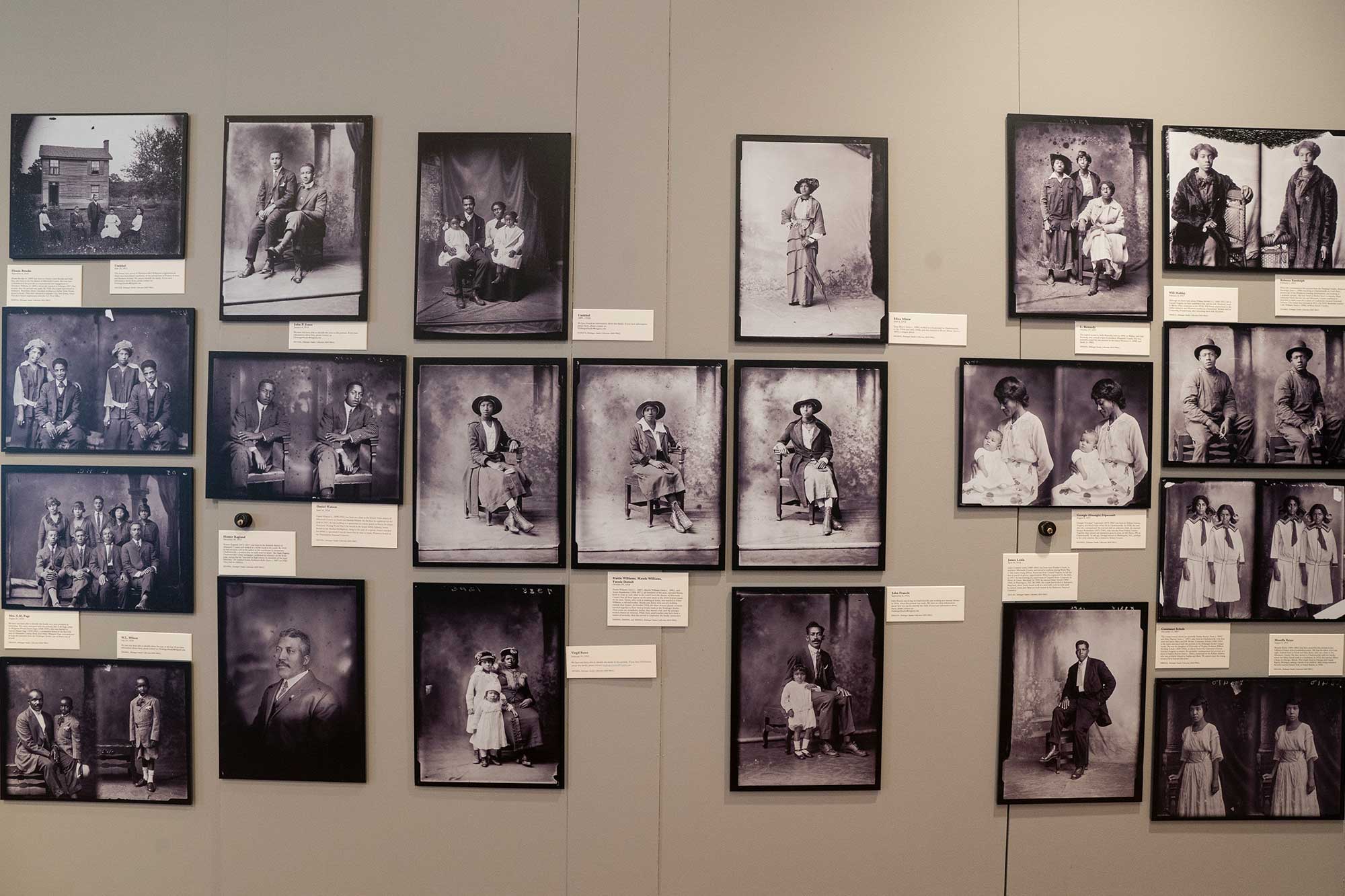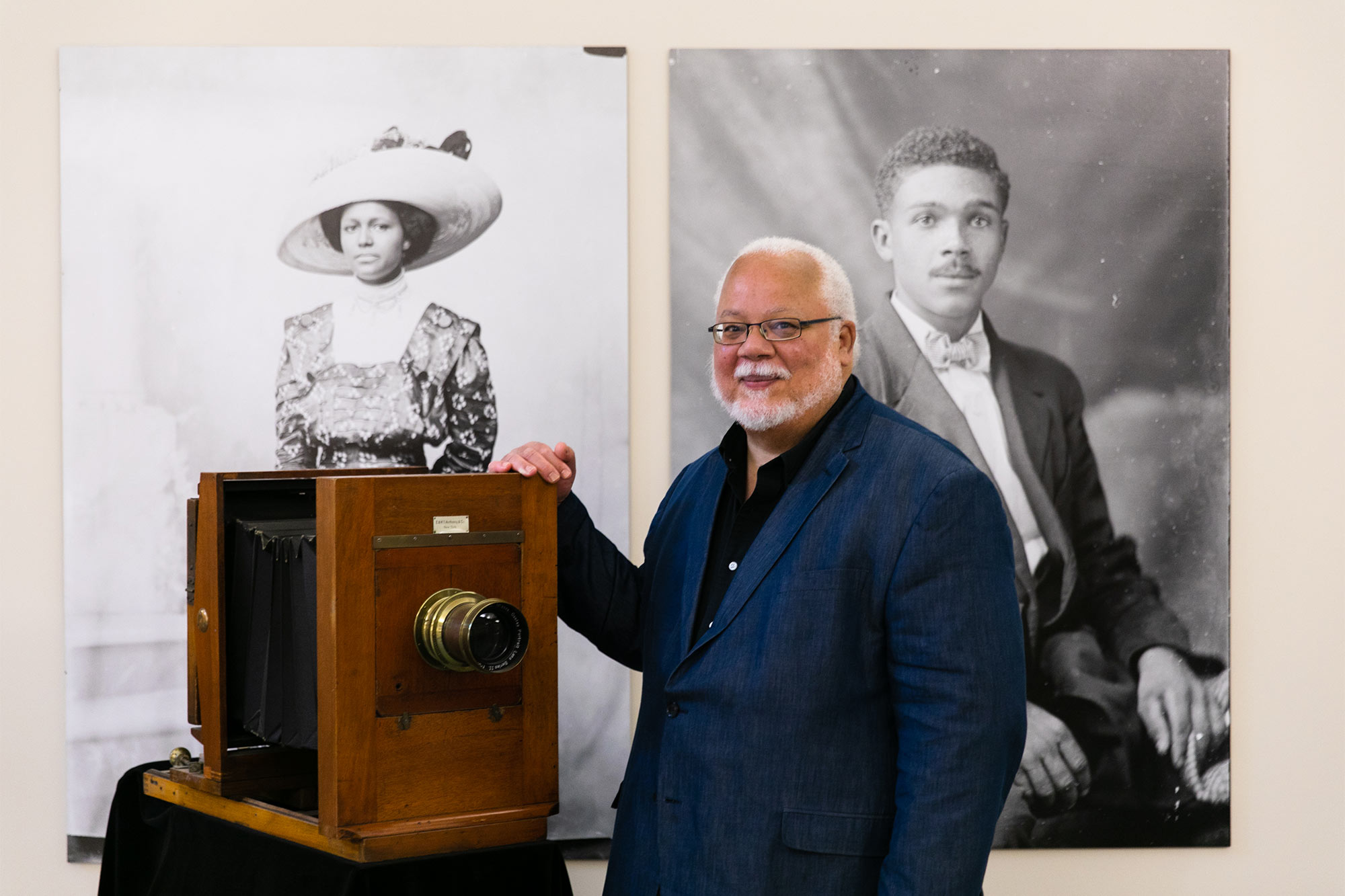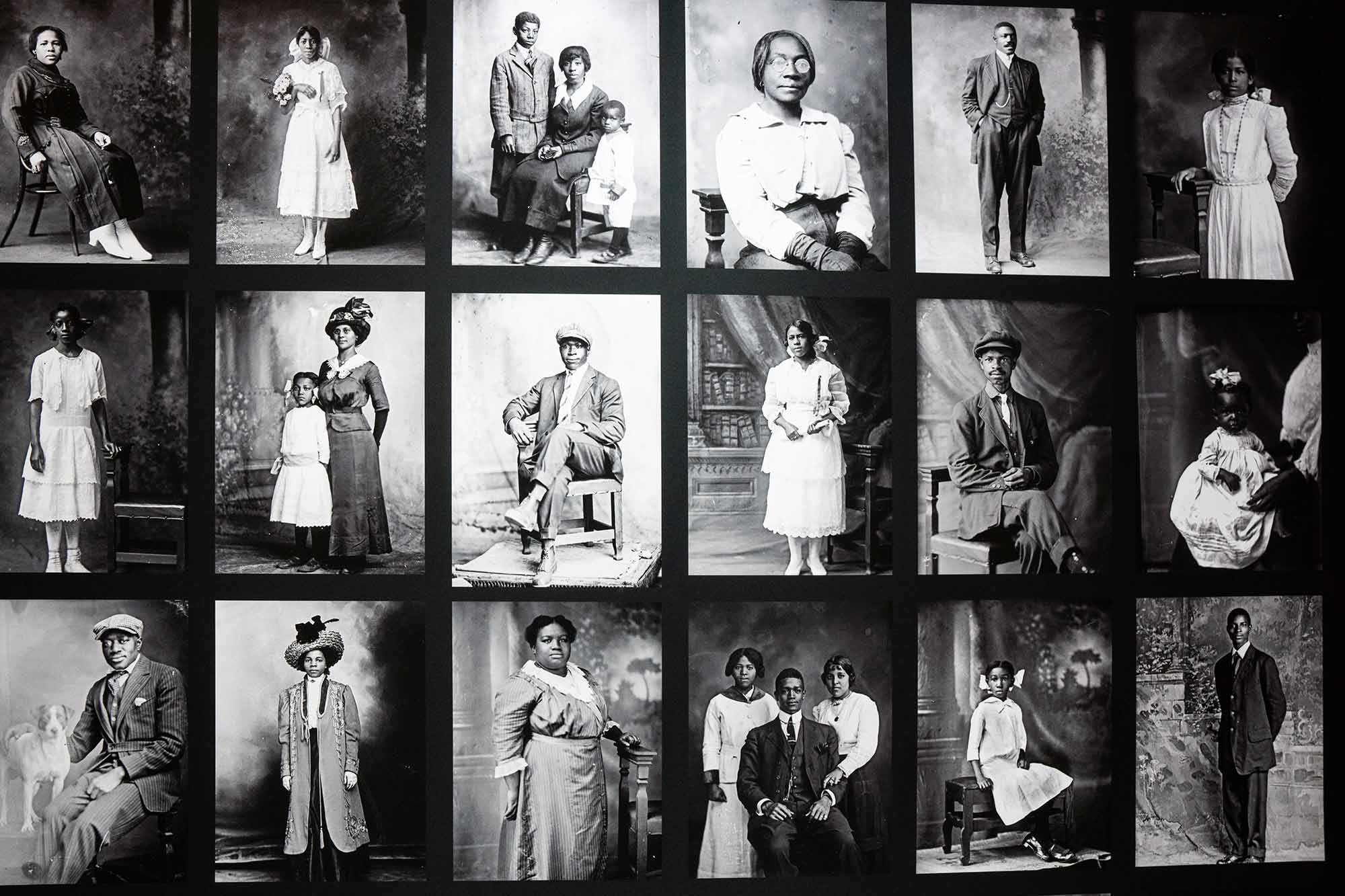She knew her grandfather well – or so she thought.
But then DeTeasa Brown Gathers found out that he had been married to the girl in the photograph.
Among the 100 spectacular photographs in the new exhibition of the Holsinger Studio Portrait Project in the University of Virginia’s Albert and Shirley Small Special Collections Library, there’s the grandfather-granddaughter pair of Anthony T. Buckner, a prominent merchant in Charlottesville, and Eileen Buckner.
At some point when she was grown, Eileen married Tommy Rhodes – Gather’s grandfather – but the union didn’t last long, Gathers said as she gazed at the Buckners’ dignified faces in the photo. She learned of this family connection from genealogist Jane Smith, who is researching African American families in the Daughters of Zion Cemetery.
At a recent exhibit, Gathers excitedly pointed out this recent finding and showed her ancestors’ portraits to history doctoral student Chloe Porche.
